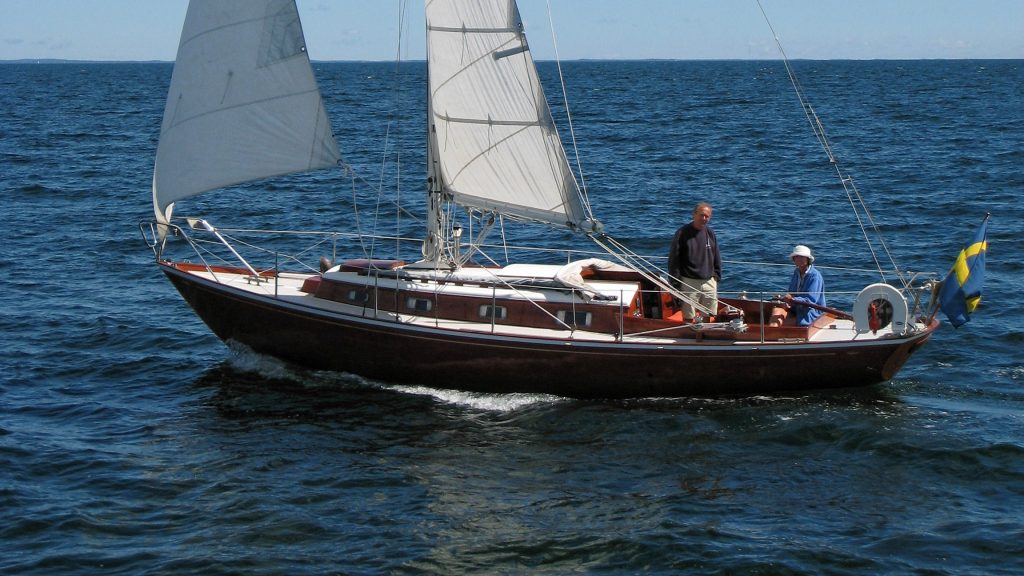How do you explain something that never existed?
A sailing yacht with keel, rig, cockpit and cabin.
What is new about it?
I would say, almost everything. And it all starts with you and me.
WHAT YACHT DESIGN USED TO BE
The yard, or a client, has ideas for a new cruising boat of a certain size, with a number of berths (meaning narrow beds in boat parlance). This will define the size of the boat. Small boat, few berths. Big or expensive boat, many many berths.
The boat needs a cockpit somewhere aft where you can steer it and control sails via a confusion of lines. From there, a ladder allows you to climb down into the main cabin (meaning one or two sofas where you can sit and watch the opposite side), with adjoining galley (a small kitchen) and sometimes a heads compartment (meaning loo, or toilet).
This entire arrangement will then be packed into a hull of the right size, with a deck to keep the wet out and a cabin on top to allow standing (or crouching) headroom.
Add a keel, a rudder, a rig and sails and a few gadgets and the design is finished.
For most yacht designers, this is still how new sailboat designs come about. A little bigger, a little smaller, with more emphasis on this or that. They may be classic, old, modern, racer-cruisers or modern charter boats. They could be built in the backyard or made in megafactories in central Europe – they all share one thing in common: They are conventional sailboat designs.
Some are well designed, with exquisite workmanship, labour of love. And I love them, having spent the summers all my life sailing all kinds of conventional boats. Like this one.

31′ sloop ‘Arietta’ designed by and built for yacht designer Olle Enderlein, later owned by me for 25 years
Is there anything wrong about a conventional type of sailboat?
No.
Absolutely not.
But I would not want to live onboard one for more than a few weeks.
THE SIZE PARADOX
The problem with the conventional type of sailboat is you have to choose:
Either the boat is big enough on the inside to accommodate the amenities you would like in a summer home. With a little air and a feeling of space.
In which case it is most often too big to handle for a solo sailor, or a couple.
Or the boat is a perfect size for pottering around the coastlines, stretches of open water, harbours and waterways wherever you happen to have your favourite sailing grounds.
In which case it is often too small inside, lacking headroom or stowage space, a nice bedroom, room for guests or a place to work.
I know, a cruiser which is not too big may be very cosy, but the other side of the coin may be that it is just a little too dark and gloomy down below, with a sense of miniature doll house.
THE PPH CONCEPT
These thoughts have been the driving force behind the evolution of our Pocket Pilot House – many years of development lie behind this design and we will show her, step by step in the following pages. Enjoy!
July 2019 / Gabriel Heyman
